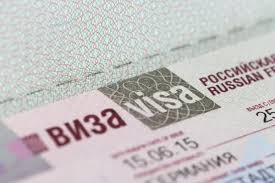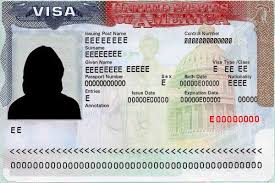
🌍 Visa-Free, Expensive, and Difficult: A Global Overview of Travel Access in 2025
Introduction
In today’s interconnected world, the freedom to travel has become both a privilege and a measure of global trust and diplomacy. While some passport holders can traverse borders with little more than a boarding pass, others must navigate complex, costly, and time-consuming visa applications. This article explores which countries open their doors freely, which impose the highest fees, and which ones maintain some of the strictest visa policies—and what that says about global mobility in 2025.
🌐 Visa-Free Countries: Where Borders Are Open
Several countries offer visa-free or visa-on-arrival access to travelers from many parts of the world. Visa-free travel allows tourists to enter and stay for a specific period without applying for a visa in advance, usually ranging from 30 to 180 days. These nations often rank high in terms of tourism, diplomacy, and global openness.
Examples of Visa-Free Countries for Most Passports:
-
Indonesia – 30-day visa-free access for many nationalities
-
Thailand – Recently expanded its visa-exempt list, boosting tourism
-
Turkey – Visa-free or e-visa for most European, Asian, and American travelers
-
Georgia – Visa-free access for EU, U.S., and many CIS countries
-
Serbia and Albania – Open-door policy for travelers from across the globe
-
Caribbean nations like Barbados, Saint Kitts and Nevis, and the Bahamas
-
South American countries like Ecuador and Colombia welcome most visitors without a visa
Countries with Visa-Free Access for Strong Passports (e.g., U.S., EU, UK, Japan):
-
Japan, Singapore, South Korea, and EU Schengen states
-
Australia and New Zealand (require online authorization but no formal visa)
-
Canada and USA for many citizens under agreements like ESTA or eTA
💸 The World’s Most Expensive Visas
Some countries, despite allowing entry, attach hefty fees to their visa processes. This is often due to security concerns, diplomatic reciprocity, or simply national policy.
Most Expensive Tourist Visas (2025 data):
-
Nigeria – Up to $300, depending on nationality
-
Russia – Can exceed $200 with processing and invitation requirements
-
United States (B1/B2 tourist visa) – Around $185, plus potential interview and documentation fees
-
China – Tourist visa for U.S. or UK citizens can cost over $150
-
India (Regular tourist visa) – Between $80 and $150 for many countries
Some countries charge more for expedited processing, or require third-party services, increasing total costs significantly.
🔐 Countries With the Toughest Visa Requirements
Not all visa processes are created equal. Some countries are notorious for their stringent documentation, high rejection rates, or political biases. Factors such as security, immigration concerns, and strained diplomatic relations can make obtaining a visa extremely difficult.
Examples of Difficult Visa Processes:
-
Russia – Requires invitation letters, biometric data, detailed itineraries
-
North Korea – Requires government approval and must join state-approved tours
-
Iran – Political tensions complicate visa approvals, especially for Americans
-
Saudi Arabia (before 2020) – Previously very strict, now easing under tourism reforms
-
Bhutan – Entry only via registered tour packages and high daily fees ($200–$250/day)
-
United States – Despite visa-waiver programs, non-exempt applicants face in-depth interviews, long wait times, and high refusal rates
-
Schengen Visa (EU) – High documentation standards; rejection rates particularly high for applicants from Africa, Asia, and the Middle East
📊 Global Passport Rankings: Who Can Travel Freely?
According to the Henley Passport Index 2025:
-
Most powerful passports: Japan, Singapore, Germany, South Korea – access to 190+ countries without a visa
-
Weakest passports: Afghanistan, Syria, Iraq, Pakistan – access to fewer than 40 countries visa-free
Passport power reflects diplomatic strength, global trust, and economic development.
🧳 Visa Trends in 2025
-
E-visas are becoming the global norm, simplifying access to countries like India, Kenya, Vietnam, and Egypt
-
Reciprocity policies are influencing changes—if one country charges high or denies access, the other may respond similarly
-
Tourism-focused reforms: Countries like Saudi Arabia, Qatar, and Uzbekistan are easing restrictions to attract more travelers
-
Regional mobility programs: ASEAN, African Union, and CARICOM are working to create visa-free zones for their members
🛂 Visa Policy and Geopolitical Influence
Visa policies reveal more than just travel logistics—they are deeply tied to international relations, security, and economic interests. Countries with relaxed visa policies often enjoy stronger global alliances and depend on tourism as a revenue source. Conversely, nations with restrictive policies may prioritize sovereignty, internal security, or use visas as leverage in diplomatic negotiations.
✈️ Conclusion: Travel Freedom Is Not Equal—But It’s Evolving
As we look around the world in 2025, the ability to travel freely is both a privilege and a geopolitical barometer. While some countries invite the world with open arms, others remain cautious and selective. The trend, however, is moving toward greater digitalization, reciprocal agreements, and tourism-driven policies.
Whether you’re holding one of the world’s most powerful passports or navigating a more complex visa system, understanding global travel access helps you plan smarter—and appreciate the freedoms you may take for granted.

-
Visa-Free Countries by Region
-
Countries with Expensive Visa Processes
-
Countries with the Most Complicated Visa Systems
-
New Visa-Free Agreements or Changes in 2025
-
Why These Policies Exist (Security, Reciprocity, Tourism)
🌐 Visa-Free Countries: Open-Door Policies by Region
🇪🇺 Europe
-
Schengen Area: Citizens of the EU can travel freely between member states. Countries like Germany, France, Italy, and Spain allow 90-day visa-free travel to passport holders from the U.S., Canada, Australia, Japan, and more.
-
Albania & Serbia: Visa-free for many countries, including Turkey, Russia, UAE, and most of Europe.
-
UK: Allows visa-free access for up to 6 months for U.S., Canada, EU (in some cases), Australia, and others.
🇦🇸 Asia
-
Thailand: As of 2025, expanded visa-free entry to over 90 countries for up to 60 days.
-
Malaysia: Visa-free access to EU, U.S., Japan, Korea, and many ASEAN countries for 30–90 days.
-
Japan: Visa-free access for over 70 nations, including the U.S., EU, Singapore, and Australia.
-
Indonesia: Allows 30-day visa-free travel for most ASEAN and Western countries.
-
Georgia: Open-door visa-free access to EU, U.S., Turkey, and several Middle Eastern countries.
🌍 Africa
-
Morocco: Visa-free access for the EU, U.S., Gulf countries, and many African nations.
-
Rwanda & Kenya: Strong advocates of e-visas and visa-free access for African nations and some global ones.
🌎 North and South America
-
Brazil, Argentina, Chile: Visa-free for most European, North American, and Asian travelers.
-
Mexico: Visa-free for 180 days for citizens from EU, U.S., Japan, and others.
-
Panama & Costa Rica: Long visa-free durations for U.S., Canada, EU.
🌏 Oceania
-
Fiji & Vanuatu: Visa-free access for most passport holders worldwide.
-
New Zealand & Australia: Visa-waiver schemes with e-authorization (eTA, ETA) for selected countries.
💸 Countries with the Most Expensive Visa Applications
| Country | Average Visa Cost | Notes |
|---|---|---|
| Nigeria | $200–$300 | Requires invitation, biometric capture |
| Russia | $160–$250 | Requires invitation letter, travel itinerary |
| U.S. (B1/B2) | $185+ | Non-refundable, long waiting periods |
| China | $150+ | Requires proof of accommodation, invitation, and return ticket |
| India (Tourist) | $100–$150 | e-Visa cheaper but regular visa more expensive |
| UK (Standard Visitor) | £115 ($145) | Plus extra for fast-track processing |
| Australia (Visitor) | $150–$200 | Must prove financial means & health insurance |
These countries often justify the cost with security screenings, anti-immigration policy, or reciprocal pricing (charging back what they’re charged).
🔐 Countries with the Most Difficult Visa Procedures
🇷🇺 Russia
-
Visa process involves invitation letters, fingerprints, biometric data, and hotel confirmations.
-
Rejections are high for some African and Middle Eastern nationals.
🇮🇷 Iran
-
Difficult for U.S., UK, and Canadian citizens. Must apply through authorized tour companies.
-
Visa-on-arrival available only for a few nationalities.
🇸🇦 Saudi Arabia
-
Previously among the hardest, but now offers tourist e-visas for 49+ countries.
-
Still strict rules around dress, behavior, and gender for some travelers.
🇳🇰 North Korea
-
No independent travel allowed. Must go through a state-sanctioned tour agency. Visa is issued only with strong political screening.
🇺🇸 United States
-
Despite ESTA/eTA programs, other nationalities face complex applications, interviews, DS-160 forms, and biometrics. Rejection rate can be high based on economic or political grounds.
🇨🇳 China
-
Requires detailed travel itinerary, proof of accommodation, return ticket, and bank statements. Rejections common without proper paperwork.
🇮🇳 India (for Pakistanis especially)
-
Complicated procedures, delays, and extensive questioning for Pakistani nationals.
🛂 Visa Policy Shifts & New Agreements (as of 2025)
-
Thailand recently added over 20 new countries to its visa-exempt list, including Saudi Arabia, Kazakhstan, and Argentina.
-
UAE launched multi-year tourist visas allowing stays up to 5 years.
-
Uzbekistan now allows visa-free travel for 60+ countries to boost Silk Road tourism.
-
Qatar extended visa-free access to EU and several Asian countries as part of its tourism vision 2030.
-
Brazil reinstated visa requirements for U.S., Canada, and Australia in 2024 after pausing them in 2019—causing controversy among travelers.
🔐 Why Do Some Countries Have Strict or Costly Visas?
-
Reciprocity: If one country imposes fees or strict entry on another, they tend to do the same in return.
-
Security: High-risk countries or areas of conflict often impose strict screening.
-
Economic Policy: High fees are sometimes used to control inflow and generate revenue.
-
Tourism Control: Bhutan, for example, uses high costs and tour packages to prevent over-tourism.
-
Immigration Pressure: Countries like the U.S., UK, and Germany impose tighter rules on citizens of countries with high overstay rates.
📈 Travel Freedom Index: Passport Strength (2025)
| Rank | Country | Visa-Free Access |
|---|---|---|
| 1 | Japan, Singapore | 193 countries |
| 2 | Germany, Italy | 191 countries |
| 3 | Spain, Finland | 190 countries |
| 4 | USA, UK, Canada | ~187 countries |
| … | … | … |
| Bottom | Afghanistan | 28 countries |
| Syria, Iraq | ~30 countries |
✅ Conclusion
Visa accessibility is a powerful reflection of diplomatic relationships, global trust, and mobility. While many countries are moving toward digital e-visas and border liberalization, others maintain tight controls for political or security reasons. Whether you’re planning a long-term adventure or a short holiday, it’s crucial to:
-
Check your destination’s current visa policy
-
Prepare all documents in advance
-
Use official government websites to avoid scams
-
Keep an eye on policy changes—they can shift quickly!
Would you like this article formatted for WordPress or turned into a PDF guide with interactive tables and downloadable visa resources?
Let me know if you’d like to explore cheapest countries to travel visa-free, or a visa strategy for digital nomads in 2025.